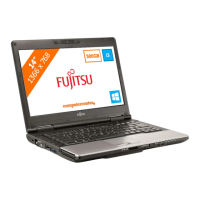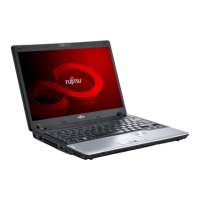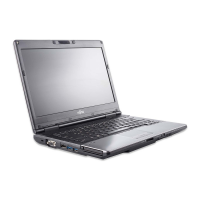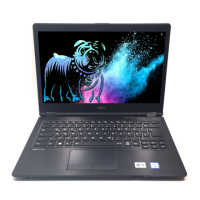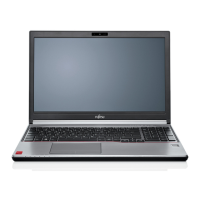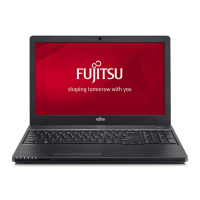28
LifeBook N Series User’s Guide
USB 2.0 is downward-compatible with
USB 1.1 devices, so older USB devices will
work with these ports. USB 2.0 is a much
faster design, running forty times faster
than USB 1.1. To connect a USB device
follow these steps:
1. Align the connector with the port opening.
2. Push the connector into the port until
it is seated.
Figure 4-11. Connecting a USB Device
S-VIDEO OUT PORT
The S-Video port allows you to connect
and use directly any S-Video device, such
as a VCR or television. The S-Video stan-
dard provides for a higher quality picture
than Composite. In order to connect an S-
Video device, follow these easy steps:
(Figure 4-12)
1. Align the connector with the port opening.
2. Push the connector into the port until it
is seated.
Figure 4-12. S-Video Jack
■
There are several types of
cables for connecting a
digital electronic device
(e.g., MD player) to the
digital audio-out
connector, depending on
the connector type. The
connector on your
computer is a Optical
Mini Plug (3.5mm diam-
eter mini plug)
■
The frequency of the
digital sound output from
the SPDIF output
connector is selectable as
48.0 kHz or 44.1 kHz. If a
sampling rate converter is
not installed in your
digital electronic device
(e.g., MD player),
recording is not possible.
See the device user
manual for more details.
■
The sound recorded
through connecting a
digital electronic device
(e.g., MD player) to the
SPDIF output connector
cannot be used as digital
output. All output data
from the SPDIF output
connector has copyright
protection information
included.

